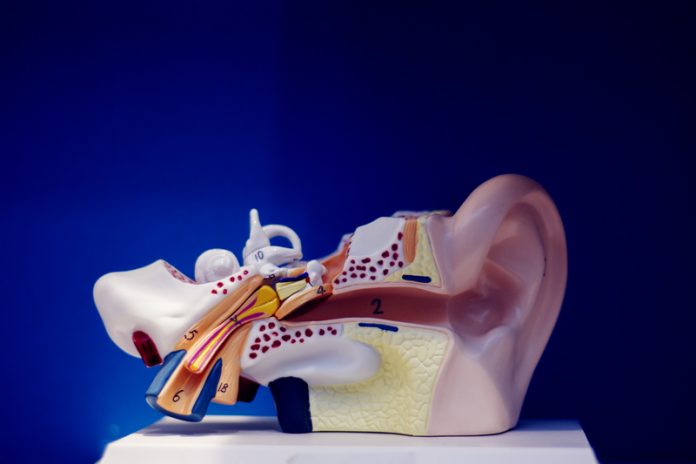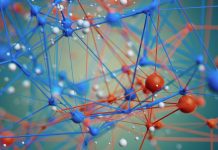The National Institute on Deafness and Other Communication Disorders charts the work of their organisation over the last 30 years that concerns research around the communication sciences, including deafness
Over thirty years ago, in 1988, President Ronald Reagan signed P.L. 100-553 into law, establishing the National Institute on Deafness and Other Communication Disorders (NIDCD) as a new institute within the National Institutes of Health (NIH).
Until that time, research on communication sciences had been supported by the NIH through the National Institute of Neurological and Communicative Disorders and Stroke (now the National Institute of Neurological Disorders and Stroke). Individuals with hearing loss, researchers, clinicians, and professional societies worked together to advocate Congress to authorise a new institute at NIH.
For just over 30 years, the NIDCD has brought national attention to disorders involving hearing, balance, taste, smell, voice, speech, and language. NIDCD contributes to advances in biomedical and behavioural research that improve the lives of the millions of people with these disorders.
Hearing and balance
Hearing loss and balance dysfunction can occur at any age and can affect communication, safety, and quality of life. The NIDCD’s robust program of basic and clinical research on hearing and balance includes genetics, genomics, and proteomics. This research focuses, in part, on the identification of genes involved in hearing loss, which can lead to earlier diagnosis and treatment, and to new therapies.
The NIDCD also supports innovative clinical and translational research to lay the foundation for making hearing health care more accessible and affordable. Even though nearly 30 million adults in the United States could benefit from using hearing aids, only one in four has used them. Current research includes identifying barriers to hearing health care and assessing novel service delivery and screening models.
Researchers are also applying cochlear implant technology to develop other neural prostheses. These devices will, for example, provide a sense of hearing for people whose auditory nerve is removed or damaged; normalise balance by electrically stimulating the vestibular nerve, and; help patients with severe speech and physical impairments express themselves using speech synthesized from brain-computer interfaces. 2018 also coincided with the 10th anniversary of NIDCD’s It’s a Noisy Planet, Protect Their Hearing.® health education campaign, aimed at increasing awareness of noise-induced hearing loss (NIHL) and how to prevent it. NIHL can happen to people at any age, so the campaign teaches kids and their parents and educators three key messages – turn down the volume, move away from the noise, and wear hearing protectors, such as earplugs and earmuffs.
Balance disorders can be quite disabling, impairing mobility and often leading to falls. NIDCD-supported scientists are examining how the brain interprets information from the ear’s vestibular organ. NIDCD clinical researchers are also developing rehabilitation procedures and prosthetic devices to improve the quality of life for individuals with balance disorders.
Taste and smell – the chemical senses
NIDCD-supported research helps us understand how our senses of taste and smell relate to our health and well-being and allow us to interact with our environment. NIDCD-funded scientists study many aspects of taste and smell, from how we first detect odours and tastes through sensory cells in the nose and taste buds in the tongue and mouth to how the brain regions involved in the central processing of incoming taste and smell information function. Scientists are also working to better understand how taste and smell sensory cells are regenerated or replaced across the lifespan by underlying stem cells. These studies may someday help scientists develop ways to restore the loss of taste and smell due to chemotherapy, ageing, injury, or disease.
The NIDCD encourages clinical research to improve the diagnosis, prevention, and treatment of taste and smell disorders in all age groups. More clinical and epidemiological studies will help us better understand how factors such as nutrition, early dietary experiences, individual genetic variation, ageing, infection, and disease affect chemosensory sensitivities and taste and smell disorders.
Voice, speech, and language
NIDCD research is leading to improved identification and treatment of voice, speech, and language disorders such as spasmodic dysphonia, stuttering, and specific language impairment (SLI). In addition, scientists continue to identify genes responsible for persistent stuttering, which may be inherited from family members.
Other ongoing research is focused on ways to improve communication in children with autism spectrum disorder (ASD), including the 25 to 30% of children with ASD who remain functionally non-verbal beyond age five. NIDCD-supported research also addresses voice, speech, and language impairments linked to injury, stroke, and neurodegenerative disorders. These communication problems – such as aphasia, dysarthria, and apraxia – often lead to increased isolation and poor quality of life.
Future directions
As we head toward new frontiers in scientific discovery and precision medicine, the NIDCD is well-positioned to support innovative studies to produce more sensitive, effective, and individually tailored interventions. NIDCD-supported researchers are dedicated to expanding our understanding of the normal processes of hearing, balance, taste, smell, voice, speech, and language and improving rehabilitation strategies for children and adults who face the challenges of communication disorders.
About the National Institute on Deafness and Other Communication Disorders (NIDCD)
NIDCD supports and conducts research and research training on the normal and disordered processes of hearing, balance, taste, smell, voice, speech, and language and provides health information, based upon scientific discovery, to the public.
About the National Institutes of Health (NIH)
NIH, the U.S.’s medical research agency, includes 27 institutes and centres and is a component of the U.S. Department of Health and Human Services. NIH is the primary federal agency conducting and supporting basic, clinical, and translational medical research, and is investigating the causes, treatments, and cures for both common and rare diseases.
National Institute on Deafness and Other Communication Disorders
www.twitter.com/NIDCD @NIDCD











